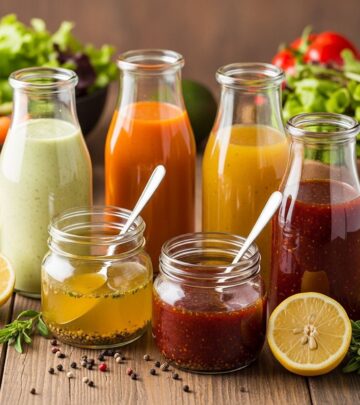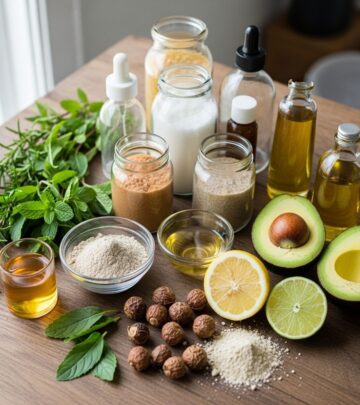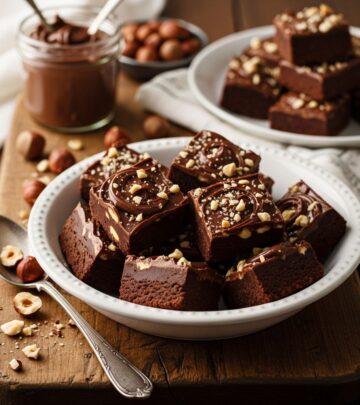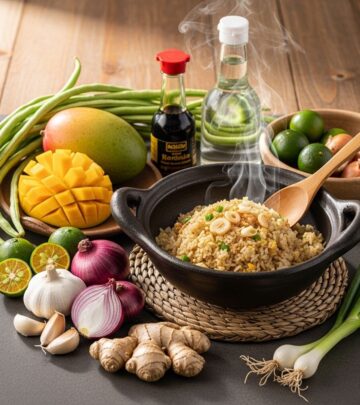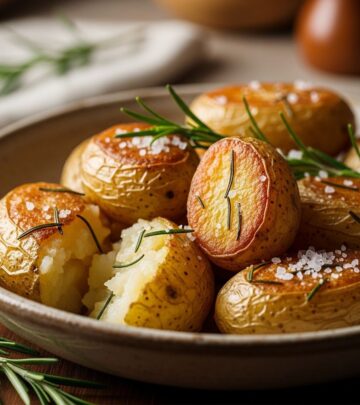Ribeye Roast Recipe: 3 Gourmet Tips For Tender, Juicy Beef
Master the art of cooking a restaurant-quality rib eye roast with minimal ingredients and effort
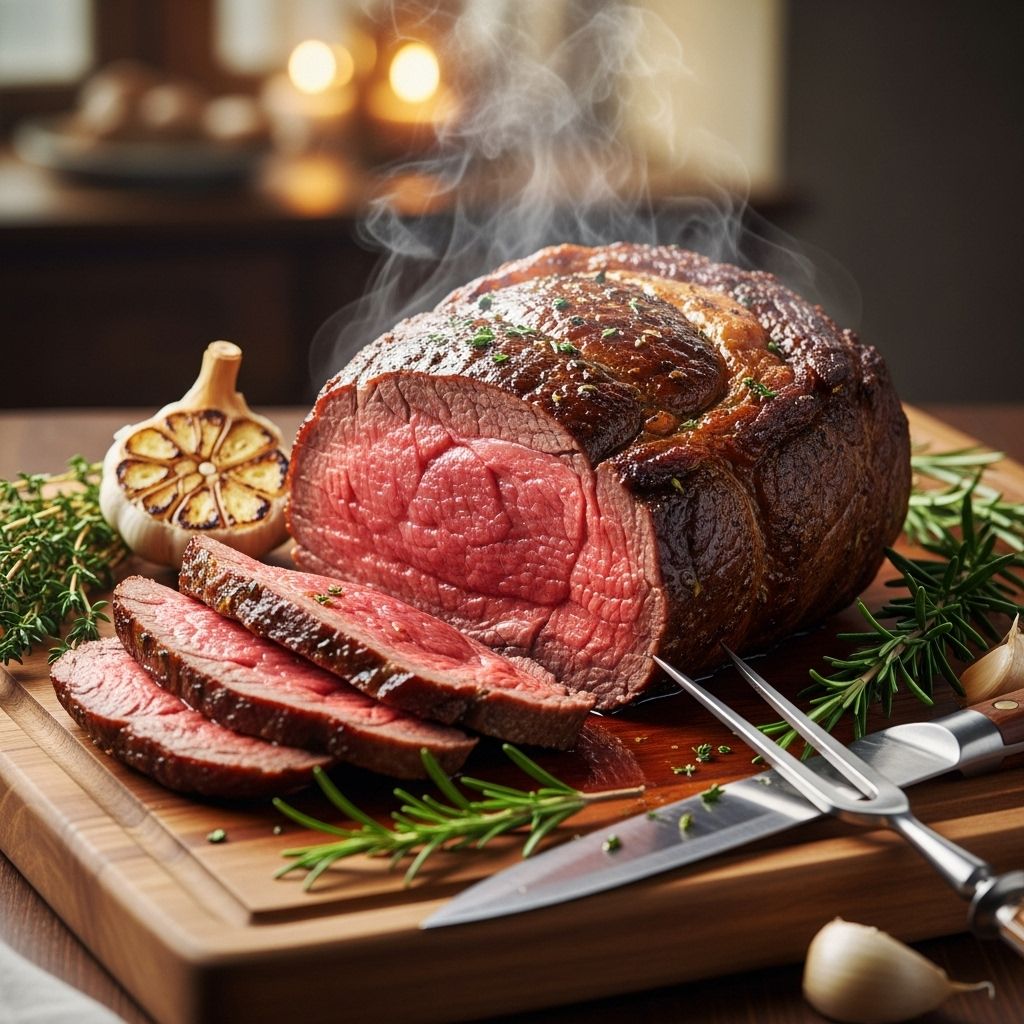
Image: HearthJunction Design Team
Perfectly Tender Rib Eye Roast: A Simple Gourmet Recipe
There’s something truly special about serving a perfectly cooked rib eye roast. The tender, juicy meat with its rich flavor makes any meal feel like a celebration. While many home cooks might feel intimidated by preparing such a premium cut of beef, this recipe proves that creating a restaurant-quality rib eye roast can be surprisingly simple. With just a handful of ingredients and some patience, you’ll be able to present a show-stopping centerpiece that will have your guests marveling at your culinary skills.
What Makes a Rib Eye Roast Special?
The rib eye roast, cut from the rib section of the cow, is celebrated for its exceptional marbling, tenderness, and flavor. This premium cut includes the same meat that, when sliced, becomes individual rib eye steaks. The marbling—those thin streaks of fat distributed throughout the meat—melts during cooking, creating an incredibly juicy, flavorful experience that few other cuts can match.
When cooked properly, a rib eye roast develops a beautiful crust on the outside while maintaining a tender, pink center. It’s this combination of textures and flavors that makes it a favorite for special occasions and holiday gatherings. Despite its gourmet reputation, preparing a delicious rib eye roast at home doesn’t require professional cooking skills or complicated techniques.
Ingredients You’ll Need
One of the best things about this recipe is its simplicity. You’ll need just a few quality ingredients to create a memorable meal:
- 1 (4-5 pound) bone-in rib eye roast
- 2 tablespoons olive oil
- 8-10 cloves of garlic, minced
- 2 tablespoons fresh rosemary, chopped
- Salt and freshly ground black pepper to taste
That’s it! The beauty of a high-quality cut like rib eye is that it doesn’t need much enhancement to shine. The simple combination of garlic, rosemary, and olive oil creates a flavorful crust that complements the natural richness of the beef without overpowering it.
Essential Equipment
Before you begin cooking, make sure you have the following items on hand:
- A roasting pan with a rack
- Kitchen twine (if your roast isn’t already tied)
- A reliable meat thermometer
- Aluminum foil
The meat thermometer is particularly important, as it’s the most accurate way to ensure your roast reaches the perfect level of doneness. Even experienced chefs rely on thermometers rather than visual cues or timing when preparing expensive cuts of meat.
Preparation Steps
Proper preparation is key to achieving the best results with your rib eye roast:
1. Bring the Meat to Room Temperature
Remove your rib eye roast from the refrigerator and let it sit at room temperature for approximately 1-2 hours before cooking. This crucial step ensures more even cooking throughout the roast. A cold roast placed directly in the oven will cook unevenly, with the outside potentially becoming overcooked before the center reaches the desired temperature.
2. Prepare the Herb Mixture
While the roast is coming to room temperature, prepare your garlic and herb mixture. In a small bowl, combine the minced garlic, chopped rosemary, olive oil, salt, and pepper. This aromatic mixture will form a flavorful crust on the roast as it cooks.
3. Season the Roast
About 30 minutes before cooking, pat the roast dry with paper towels. This step helps the seasoning adhere better and promotes better browning. Next, generously rub the entire surface of the roast with the garlic and herb mixture, making sure to cover all sides. If your roast isn’t already tied, now is the time to secure it with kitchen twine to help it maintain a uniform shape during cooking.
4. Preheat the Oven
Preheat your oven to 500°F (260°C). The initial high temperature is essential for creating a flavorful crust on the outside of the roast. Your oven should be fully preheated before the roast goes in.
Cooking Method
The cooking method for this rib eye roast utilizes a “sear and slow roast” technique that helps develop flavor while ensuring a juicy, tender result:
1. Initial High-Heat Sear
Place the seasoned roast on the rack in your roasting pan, with the fat side facing up. Insert the roast into the preheated 500°F oven and cook for 20 minutes. This initial high-heat period creates a delicious crust on the outside of the meat and seals in the juices.
2. Reduce Temperature for Slow Roasting
After the initial 20-minute searing period, reduce the oven temperature to 325°F (165°C) without opening the oven door. This temperature reduction allows the roast to cook more slowly and evenly through to the center.
3. Monitor Internal Temperature
Continue cooking the roast at the lower temperature for approximately 1.5 hours (90 minutes), but begin checking the internal temperature after about 1 hour. For a medium-rare roast, you’re aiming for an internal temperature of 135°F (57°C). Remember that the roast will continue to cook slightly during the resting period, raising the temperature by about 5 degrees.
Use this temperature guide for your desired level of doneness:
- Rare: 125°F (52°C)
- Medium-rare: 135°F (57°C)
- Medium: 145°F (63°C)
- Medium-well: 150°F (66°C)
- Well-done: 160°F (71°C)
4. Rest Before Carving
Once your roast reaches the desired internal temperature, remove it from the oven and tent it loosely with aluminum foil. Allow the roast to rest for at least 15-20 minutes, preferably 30 minutes for larger roasts. This resting period is crucial as it allows the juices to redistribute throughout the meat, resulting in a more tender, flavorful roast.
Carving and Serving Suggestions
Proper carving technique helps showcase your perfectly cooked rib eye roast:
Carving Technique
If your roast has bones, you’ll want to remove them before slicing. Use a sharp carving knife to cut along the bones to separate them from the meat. Once the bones are removed, place the roast on a cutting board and slice against the grain into serving portions approximately 1/2-inch thick. Cutting against the grain (perpendicular to the muscle fibers) ensures maximum tenderness.
Serving Recommendations
A beautifully prepared rib eye roast deserves equally delicious accompaniments. Consider serving your roast with:
- Creamy horseradish sauce or au jus for dipping
- Roasted garlic mashed potatoes
- Oven-roasted vegetables like carrots, Brussels sprouts, or asparagus
- Yorkshire pudding for a traditional touch
- A bold red wine such as Cabernet Sauvignon or Malbec
Tips for Perfect Results
Even with a simple recipe, a few professional tips can help ensure your rib eye roast turns out perfectly:
Selecting Your Roast
When purchasing your rib eye roast, look for one with good marbling throughout. This intramuscular fat is key to a flavorful, tender result. For bone-in roasts, the bones add flavor, but boneless roasts are easier to carve. Either option works well with this recipe. Plan for about 1/2 pound per person for a bone-in roast, or 1/3 pound per person for boneless.
Understanding Carryover Cooking
Remember that your roast will continue cooking after it’s removed from the oven, with the internal temperature rising about 5 degrees during the resting period. To account for this carryover cooking, remove the roast from the oven when it’s 5 degrees below your target temperature.
Troubleshooting Common Issues
If your roast turns out too rare in the center, you can always return it to a 325°F oven for additional cooking time. Check the temperature every 10 minutes to avoid overcooking. If the outside is browning too quickly during cooking, tent the roast loosely with foil to prevent burning while allowing the center to continue cooking.
Storing and Reheating Leftovers
Leftover rib eye roast can be just as delicious as when freshly made:
Storage Guidelines
Refrigerate any leftover roast within two hours of cooking. Store it in an airtight container or tightly wrapped in aluminum foil or plastic wrap. Properly stored leftovers will keep in the refrigerator for 3-4 days.
Reheating Methods
To maintain the tenderness of your leftover roast, avoid high-heat reheating methods. Instead:
- Slice the cold roast thinly and serve at room temperature
- Reheat slices briefly in beef broth over low heat
- Warm in a 250°F oven until just heated through
- Use leftovers for sandwiches, salads, or beef stroganoff
Frequently Asked Questions (FAQs)
Q: Can I use this same recipe for a boneless rib eye roast?
A: Absolutely! The cooking method works equally well for boneless roasts, though you may need to reduce the cooking time slightly. Continue to rely on your meat thermometer for the most accurate results rather than strictly following the time guidelines.
Q: How far in advance can I season the roast?
A: For the best flavor, you can season your roast up to 24 hours in advance and refrigerate it uncovered. This dry-brining process not only enhances flavor but also helps create a better crust during cooking. Just remember to bring the roast to room temperature before cooking.
Q: Is it necessary to sear the roast on the stovetop before roasting?
A: No, this recipe uses the high-temperature oven method to create a sear, which is often easier than stovetop searing for large roasts. The initial 500°F roasting period accomplishes the same goal of developing a flavorful crust.
Q: How do I know if my roast is done without a meat thermometer?
A: While a meat thermometer is strongly recommended for best results, you can use the touch method in a pinch. Press the center of the roast with your finger—rare feels soft and squishy, medium-rare feels slightly firmer with some give, and medium feels firm with only slight give.
Q: Can I add other herbs to the seasoning mixture?
A: Certainly! While rosemary and garlic create a classic flavor profile, thyme, sage, or oregano also work beautifully with beef. Feel free to customize the herb mixture to your preferences.
This simple yet elegant rib eye roast recipe proves that creating an impressive main course doesn’t require complicated techniques or extensive ingredient lists. With attention to a few key details—proper temperature control, adequate resting time, and careful carving—you can serve a restaurant-quality roast that will become the centerpiece of your special occasions and holiday gatherings for years to come.
References
- https://www.allrecipes.com/recipe/240522/easy-rib-eye-roast/
- https://www.allrecipes.com/recipe/240543/easy-prime-rib-roast/
- https://www.allrecipes.com/recipe/97621/foolproof-rib-roast/
- https://www.allrecipes.com/recipe/221958/chef-johns-perfect-prime-rib/
- https://www.allrecipes.com/recipe/230368/prime-rib-its-easier-than-you-think/
Read full bio of Shinta

